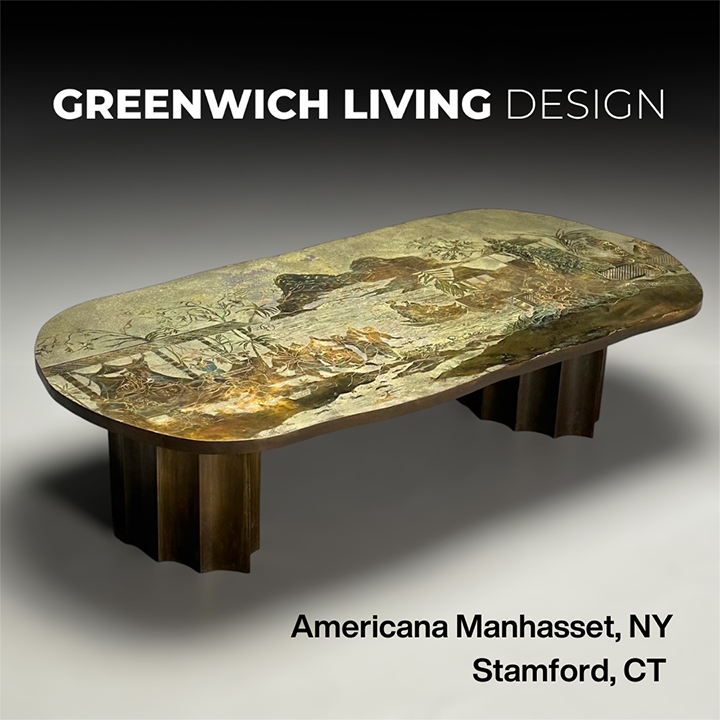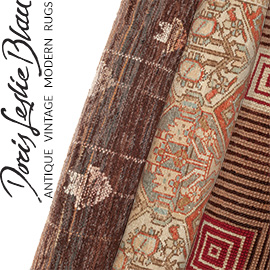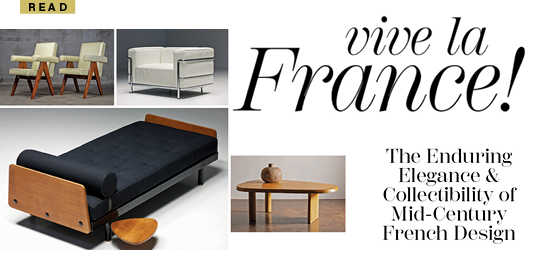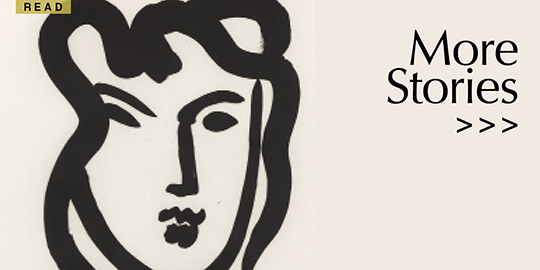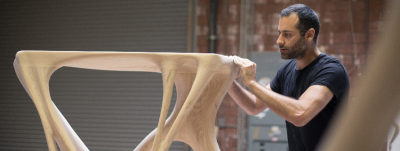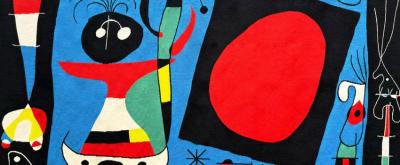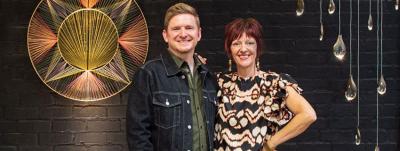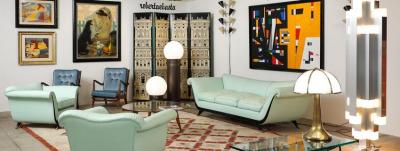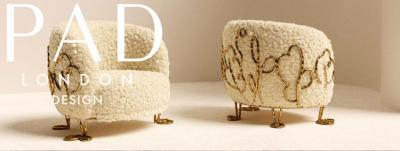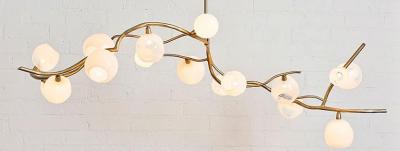Karl Springer and the art of Maximalist Minimalism
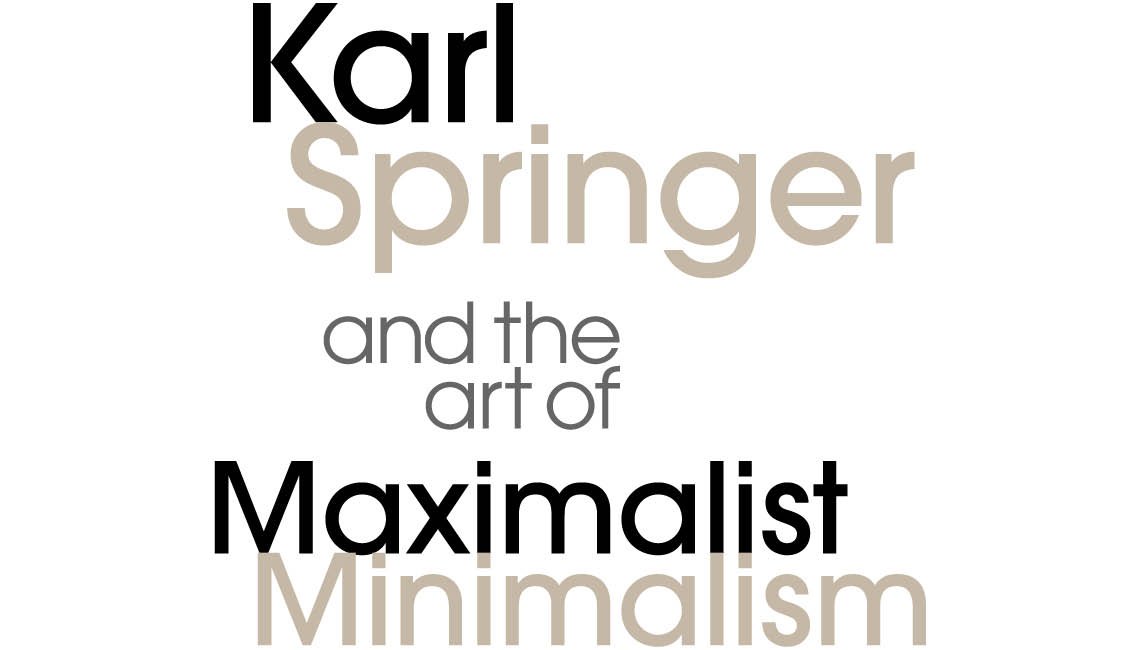 |
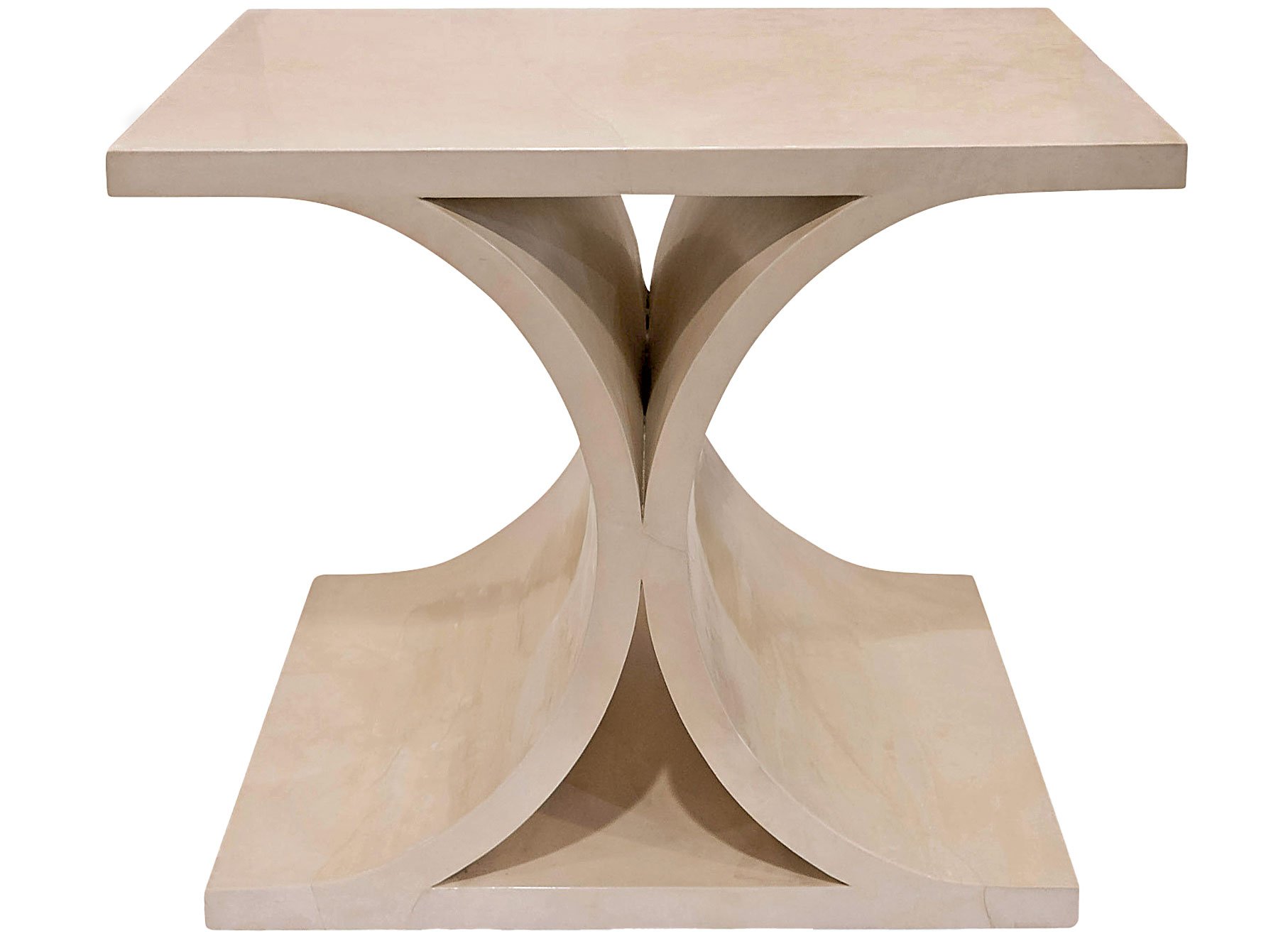 |
JMF Side Table in lacquered goatskin, 1970s, from Karl Springer’s Jean-Michel Frank series, which pays tribute to the great French interior designer of the 1920s and 30s. Courtesy of Lobel Modern. |
"The pieces that attract me have detailing that you can contemplate for hours,” Karl Springer told Architectural Digest, speaking about his personal taste for a profile story published in 1989, two years before his death at age 60, of an AIDS-related illness. The designer went on to explain that because he sought the same standard of quality for everything he produced under his name, there was no possibility of mass production. Everything from his workshop was handmade, stating, “We make one piece at a time.”
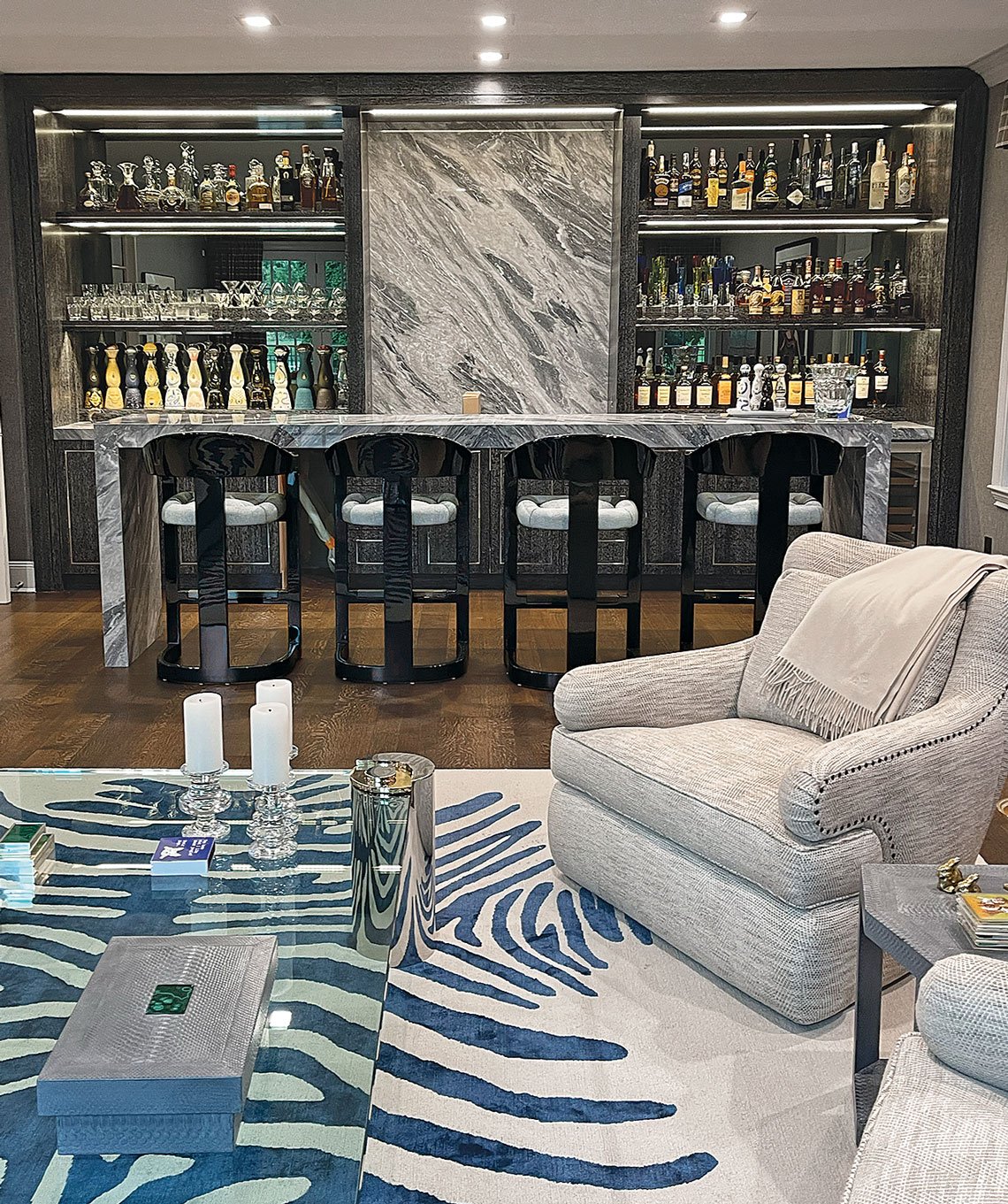 | |
Karl Springer “Onassis” bar stools and “Coffee Table with Sculpture Leg” with polished chrome legs, 1980s. Interior design by J Cohler Mason |
Springer was famous for his attention to detail. His designs were not radically different or even new, his aesthetic sensibility was shaped largely through the lens of French Art Deco which he translated into classic modern shapes and forms, often on a bold scale to convey grandeur, and always executed in opulent and expensive materials with impeccable craftsmanship. Design dealer Evan Lobel, owner of New York gallery Lobel Modern, who has years
of knowledge and experience in researching, buying, and selling Springer material, remarks, “He updated Art Deco for the present but with a level of glamor and elegant simplicity for the times.”
Interior designer Jennifer Cohler Mason of J Cohler Mason Design is one of many designers that Lobel works with and is a frequent buyer of Springer designs for residential projects — she even has a rectangular gunmetal, brass, and glass two-tier Springer coffee table in her New York apartment. “I like to slip a Springer piece or two into most of my interior projects. Love the material,” she says. “One of the things about Springer is that the forms are timeless and work with any genre or era of furniture. He worked with metals, glass, wood, goatskin — a lot of neutral materials, so his pieces fit easily into interiors.”
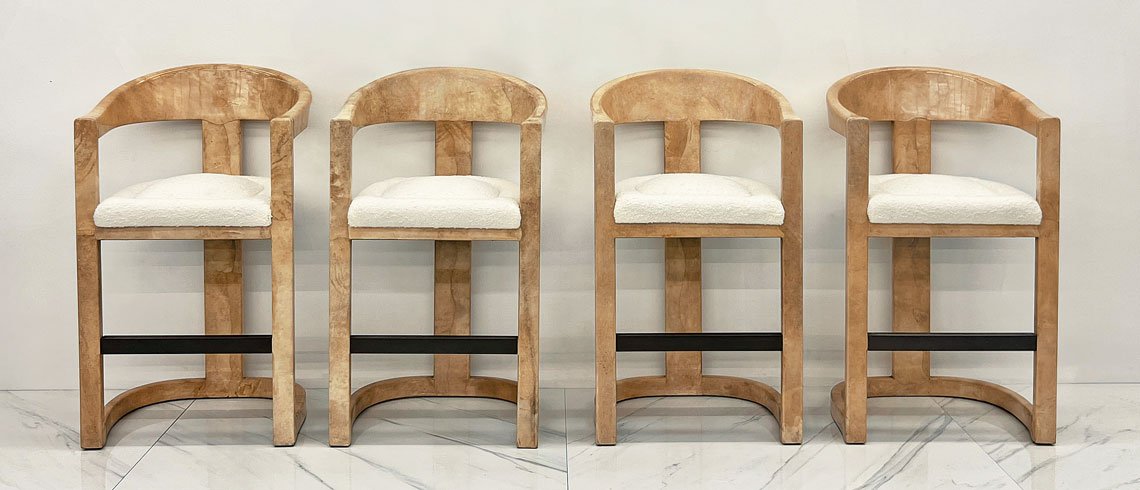 |
Set of four “Onassis” bar stools in lacquered goatskin with bronze footrests, 1980s. The design was named for Jacqueline Kennedy Onassis after she ordered a set for the yacht Christina O. From Habitat-Gallery on Incollect.com |
Cohler Mason loves almost everything Springer made but has a special affinity for his tables. In a recent Long Island project she integrated a pair of Springer tables embossed with crocodile skin for the living room, and a massive steel and glass coffee table for one of the family rooms. “Scale can be an issue with Springer as his furniture is usually larger format and chunkier — for lack of a better word. But it all depends on the space.” Wrapped pedestal tables and patinated Murano glass “scavo” vases by Springer also appear in her projects, when she can get them, she says, as well as Springer lighting which she adores. Springer’s lighting doesn’t look like anything else, and that is important to me as I don't want my projects to look like everyone else’s.”
Designer Kristin Coates couldn’t agree more. “The lines of his work have always felt so timeless to me, making Springer a go-to resource for all my interior projects,” she says. Coates works frequently with Victorian and Colonial structures in Newport, RI., and has found that Springer fits right in. “The furniture brings the design story into the future while the architectural details remain anchored in history. Springer's designs seamlessly bridge this gap. His furnishings are wonderfully versatile and lend themselves just as well to a coastal Victorian home as they do a Manhattan loft.” Coates gravitates toward his mirrors, seating, and decorative boxes, enamored, she says, by his use of materials, especially his use of lacquered parchment, Lucite, and polished steel. “They still feel completely contemporary, even 40 or 50 years later.”
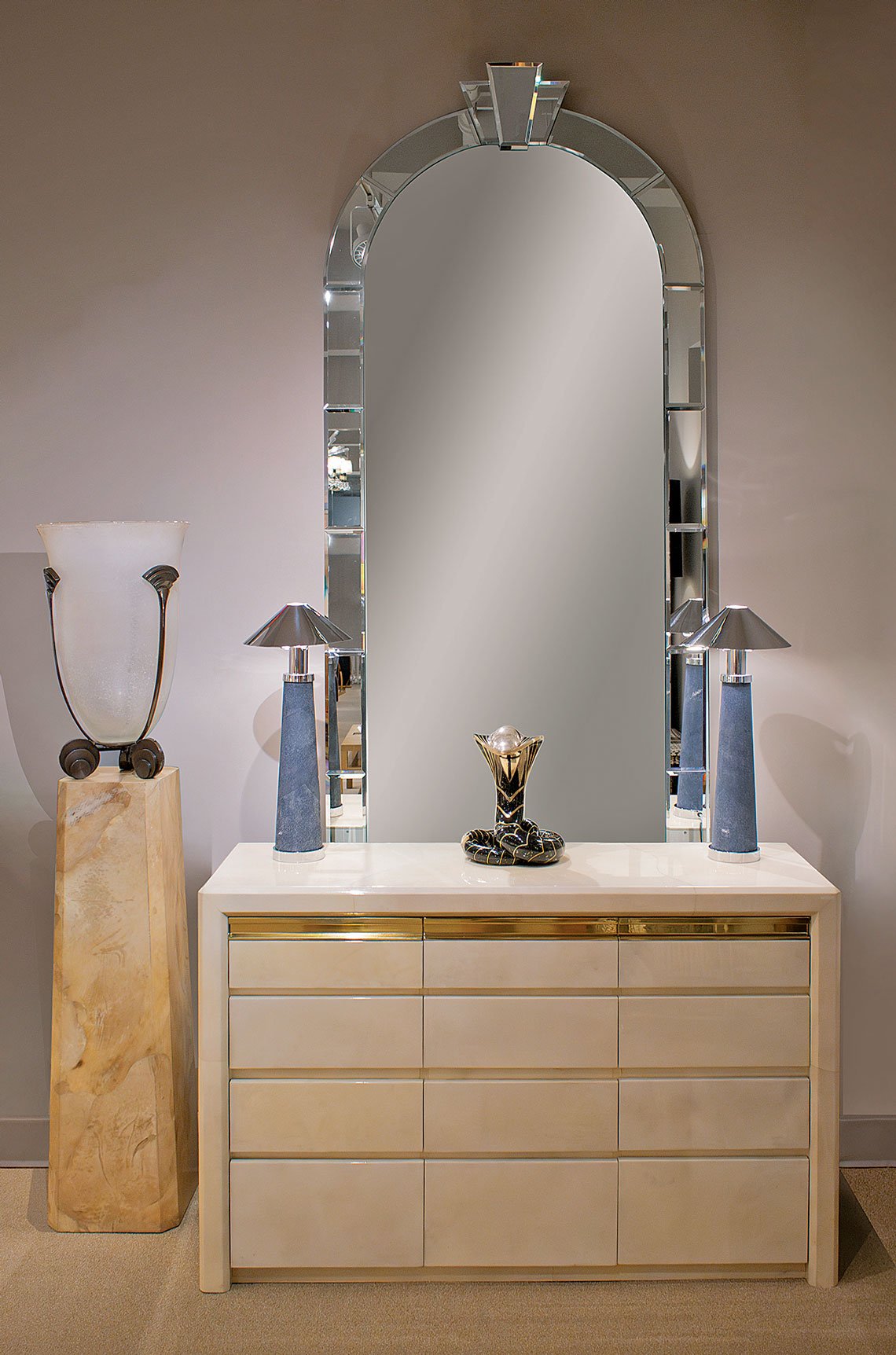 |  | |
Left: Tapering pedestal with chamfered corners in lacquered goatskin, 1970s; Scavo glass urn with hand-forged bronze elements produced by Seguso Vetri d’Arte, Murano, Italy for Karl Springer, 1980s; Chest of drawers in lacquered goatskin with brass pulls, 1980s; Dome top Art Deco mirror with beveled edge mirror panels, 1980s; Lighthouse table lamps in blue-gray shagreen with polished nickel details and shades, 1980s. From Lobel Modern on Incollect.com. Right: “Dome Top Mirror” in ivory shagreen with bone inlays, 1980s; “Sculpture Desk Lamp” in polished chrome, 1980s; “Chinese Parsons Style Desk” in artisan shagreen lacquer with brass inlays at sabots, 1980s; “JMF Chair” (one of a pair) in two-tone embossed lizard leather with leather seat, 1970s. From Lobel Modern on Incollect.com. | ||
 | 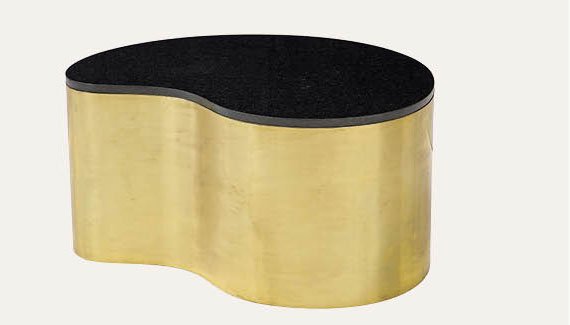 |
Left: Round Leg Lucite Bench with polished brass stretchers and upholstered seat, signed, 1980s. | |
 | 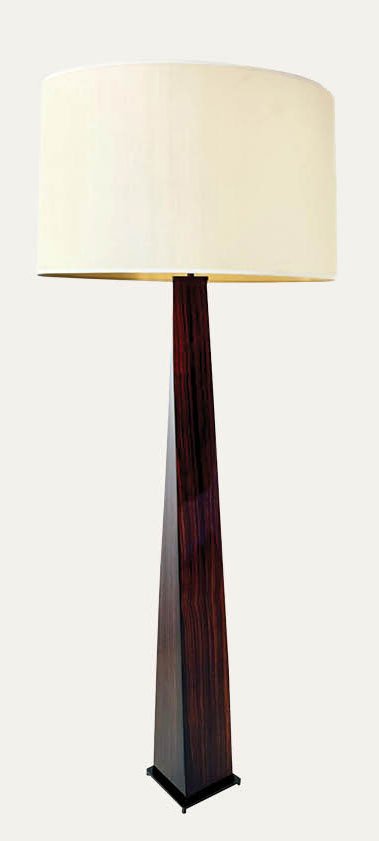 |
Pair of large tessellated penshell end tables with curved | |
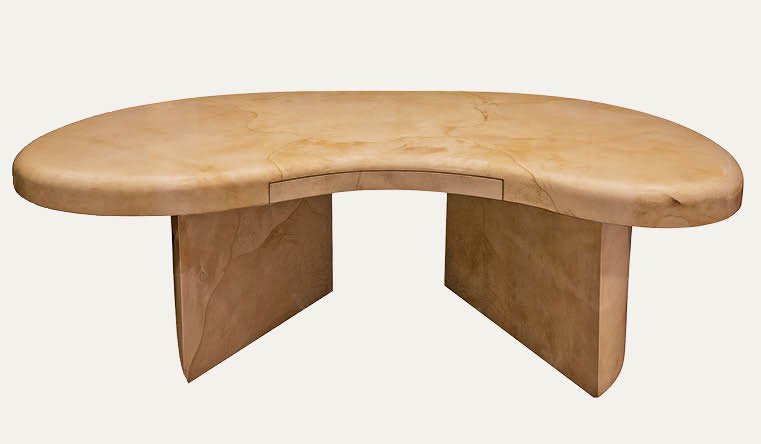 | |
Lacquered goatskin Free Form Desk with center drawer, date stamped 1988. | JMF Floor Lamp with twisting shaft in a polished macassar ebony wood with solid bronze base and hardware, 1980s. From Beto Oliveros Studio on Incollect.com. |
A large project she’s been working on includes selections from Lobel’s trove of Springer pieces. It’s an 1860s Victorian in Newport, originally Edith Wharton’s childhood home where she first tried her hand at interior design before purchasing and moving to Lands End, also in Newport. “After 100-plus years of dreadful design decisions, or maybe just no thought in design at all — it was even a design show house in the 1990s — my current clients bought the house in 2020 and wanted to restore the property for a family holiday home. My design aesthetic is a contemporary nod with great respect for history. I look at where a home has been in order to see where it wants to be in the future. I love the surprise when people walk in the front door of an old house and see contemporary art and furnishings. It brings these old places new life and I find clients really resonate with this.”
Springer's innovative approach to designing and his ability to blend traditional and modern elements made him a household name throughout the 1970s and ‘80s when nearly any high-end interior designer with a modernist sensibility was buying Karl Springer furniture. His celebrity client list included everyone who was anyone: Princess Diana, Jackie Onassis, Diana Ross, and Frank Sinatra. He had showrooms in major American cities and beyond, and at his peak, in Germany and Japan from where he issued a stream of objects, most of them custom commissions.
 |
Coffee table completely wrapped in brown python with polished chrome steel details, 1972. From Liz O’Brien on Incollect.com. |
.jpg) | |
Jean-Michel Frank series JMF floor lamp with a square twisted base in a gilded finish with matching square gilded paper shade, c. 1980. From Liz O’Brien on Incollect. |
There was little in Springer’s background that prepared him for a life at the pinnacle of the design world. He was born in 1931 in East Germany, and the family escaped to the West before the borders were closed. He met an American soldier stationed in Germany and together they moved to New York in the late 1950s where he found work in merchandising at Lord & Taylor. Springer was talented but also lucky; he had a friend who worked at Hermès who asked him to use his skills in leather bookbinding to fabricate bound leather seating booklets for dinner parties to sell through the Hermès store. They were a hit, and Springer soon started wrapping small objects — picture frames, mirrors, and boxes — in leather and skins for sale at boutiques.
Springer rapidly expanded his repertoire of designs to include furniture, usually wrapped in increasingly exotic and lacquered skins: goat, lizard, alligator, shagreen, and python. His first big market success was his wrapped telephone tables — small two-tiered side tables meticulously covered in leather or skins with brass castors. He did his own work initially, but as demand grew he set up workshops and employed skilled craftsmen to assemble the pieces to his exacting specifications. He hired specialists in lacquering, gilding, leather wrapping, and woodworking, locally at first, and later, around the world. By 1969 he had opened a showroom on East 61st Street in New York and counted Wallis Simpson, Duchess of Windsor (and wife of former King Edward VIII) among his early supporters.
Springer’s designs remain much sought after today, though, as with most successful vintage markets discerning what is an original Springer creation, a later authorized reissue, or an outright copy, requires knowledge and expertise. Springer died in 1991 and the company he founded continued until 1993, when it filed for bankruptcy and the trademark was sold to a former Springer employee, designer Mark Eckman. Eckman later reissued several iconic designs, in some cases made by Springer’s former craftsman, which have now made their way into the secondary market.
Todd Merrill, the New York design dealer, was also involved in keeping Karl Springer’s inventory alive. Merrill had been selling vintage Springer works for some time and noticed Springer had “re-emerged in the secondary market in the early 2000s” as he explained to Architectural Digest in 2017, and that the prices for vintage works were exceeding costs to produce new ones. In 2016 he and Eckman joined forces to reissue some of Springer’s iconic, popular designs under the Karl Springer LTD logo, beginning with the Free Form tables. The pieces were reproductions of the originals, though they were also made by some of the same craftsmen who had worked on the initial designs, with the same attention to detail.
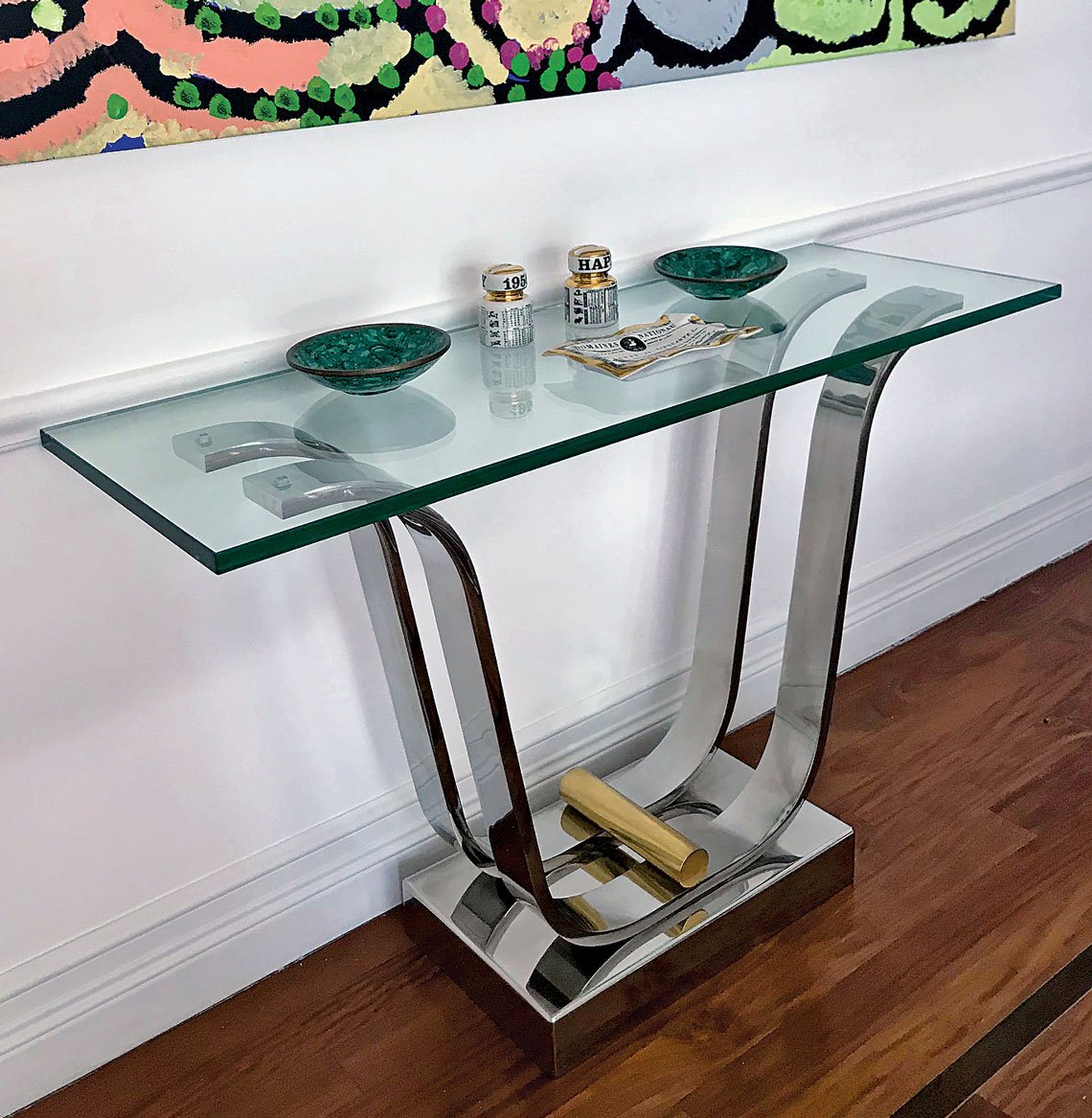 | 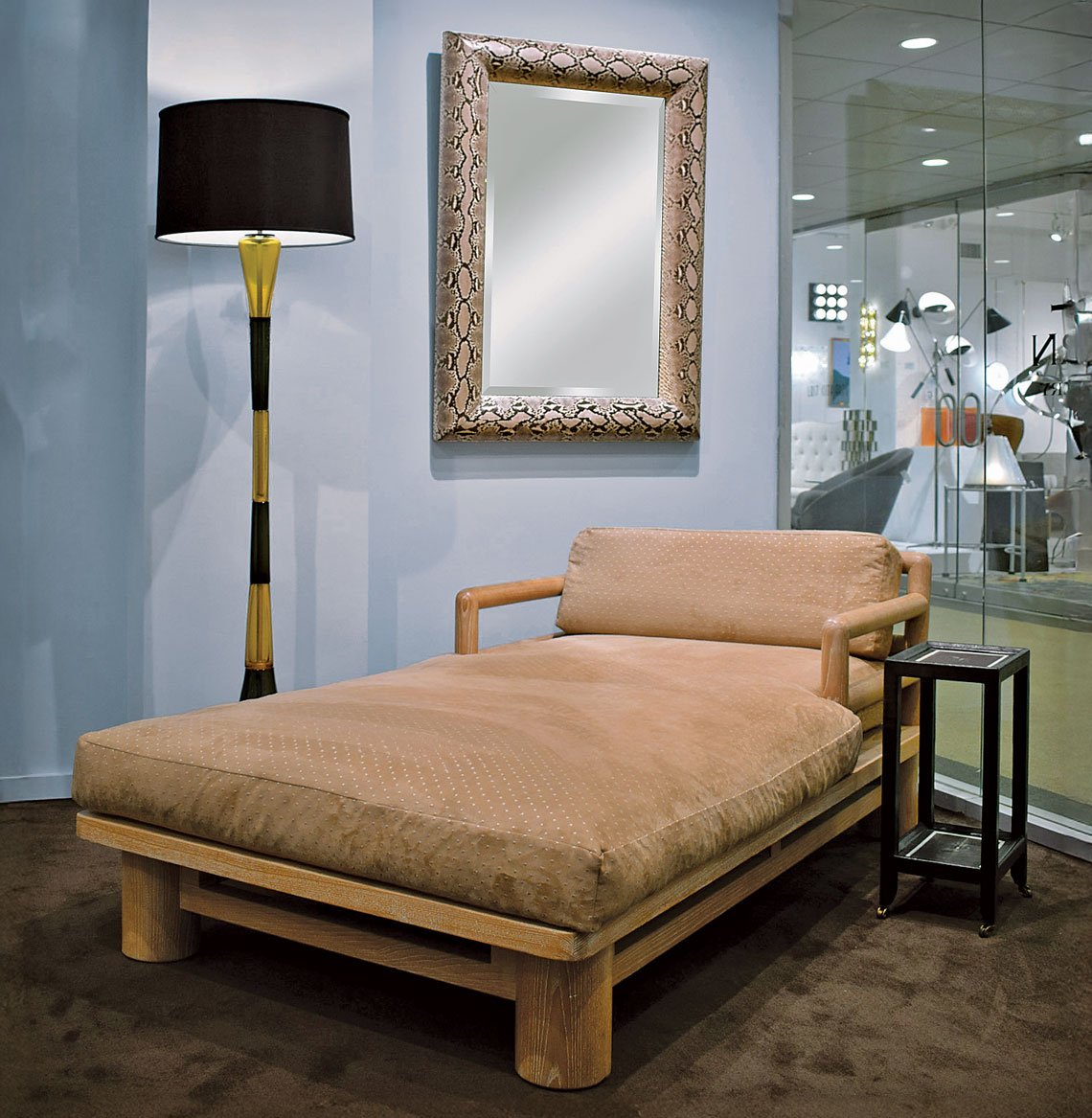 | |
Left: Art Deco tulip table bases in mirror-polished stainless steel accented with brass, 1970s. From Tishu on Incollect.com. Right: A gallery vignette from Lobel Modern: Large wall hanging mirror in pale yellow and black python, 1970s; Dowelwood chaise in cerused oak, 1980s. | ||
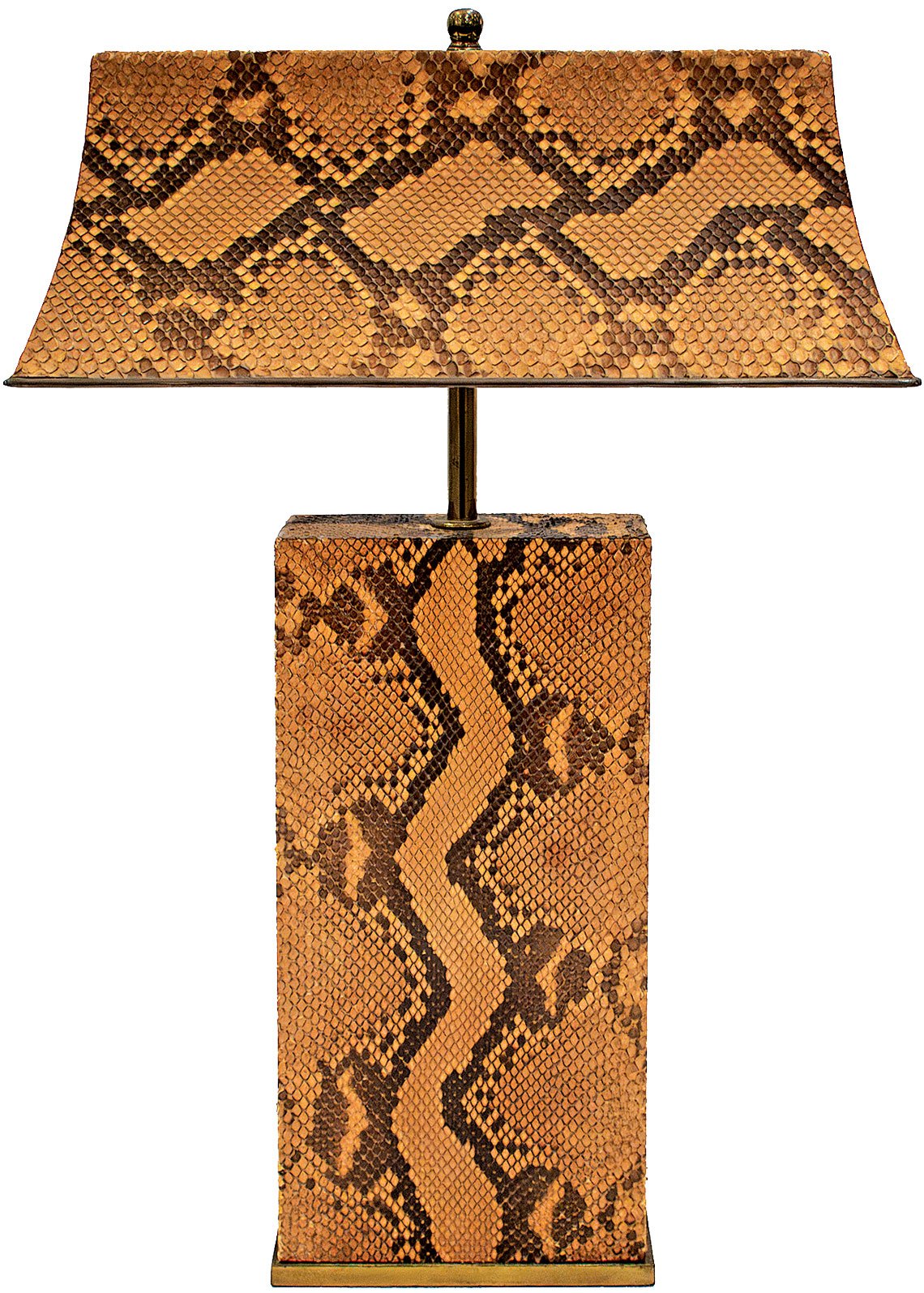 | |
“Pagoda” lamp in brown and black python, with bronze shade interior and bronze details, 1970s. The bronze shade interior is typical of Springer’s attention to detail and craftsmanship, the effect is a warm, nuanced light. From Lobel Modern on Incollect.com |
Prices recorded in the Artnet price database show a secondary auction market for Springer that is both stable and consistent. This does not tell the whole story: while the volume of transactions is large, over 1250 results in the database, prices are relatively low in comparison to his designer peers, in part — it would appear — because of the reissuing of his coveted designs. Auction prices for the rare original Free Form tables from the 1970s (a set of 2 or 3) have achieved the highest auction prices, with a set of three sold at Wright in Chicago in 2014 for $50,000. This remains the auction record for the designer.
The market for Springer’s work does not always distinguish between the works produced during his lifetime and the later reproductions, a situation that is complicated by the fact that according to New York design dealer Evan Lobel (who purchased the collection of original Polaroids of Springer’s inventory taken in his New York showroom and has devoted years to researching and writing about Springer) only around half of the pieces the designer produced during his lifetime had studio labels or were signed. Complicating the matter further, Lobel says, Springer used different labels at different times with different materials.
“You can't just go by the labels when it comes to Springer,” Lobel says. “Some designs are simply iconic and only made for Springer and there is no doubt that they are authentic even if they are unmarked,” he explains. Lobel points to the Free Form tables, which he regularly has in his gallery in the New York Design Center. “You can't stamp smooth curved metal, so these tables were never marked,” he says, adding that there are ways to determine authenticity. “You have to look at the shape, thickness of the metal, the quality, finish, patina, and age, and the internal construction.”
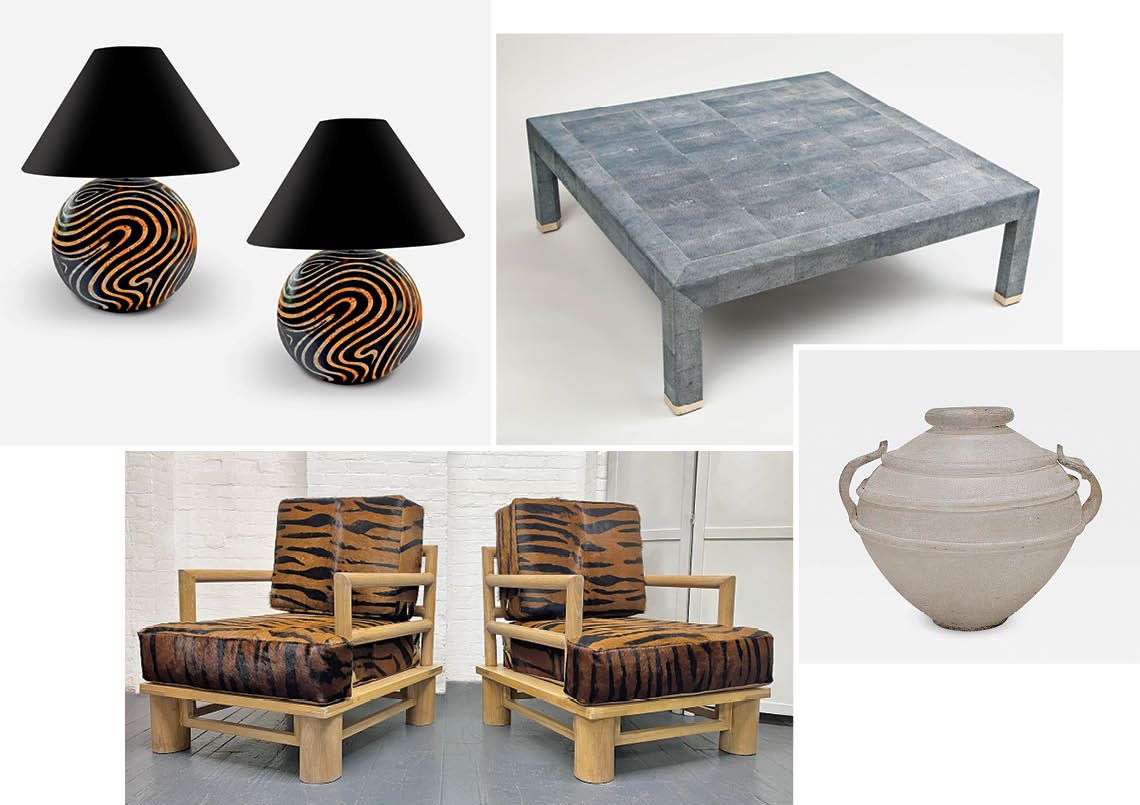 |
Clockwise from top left: “Vermicelli” ball table lamps with a swirling pattern of incised black enameled wood and gold and silver leaf in a lower layer, 1979. From TFTM on Incollect.com. • Cocktail table in blue-gray shagreen, the table surface in a pattern of squares with inlaid bone dots at the corners and bone-covered leg caps. Handcrafted in the Philippines for Karl Springer circa 1980s. From Solo Modern on Incollect.com. • Large hand-blown white scavo glass vase produced by Seguso Vetri d’Arte, Murano, Italy for Karl Springer. The scavo (Italian, excavation) technique is meant to imitate the weathered surface of glass from an archeological excavation. From Lobel Modern on Incollect.com. • Dowelwood lounge chairs in cerused wood with zebra hide upholstered cushions, circa 1970s. From Flavor on Incollect.com. |
Though Springer came to be identified with design in the disco era, his designs were far more varied and textured than is often appreciated. He adjusted his style more or less every decade of his career and evolved his thinking as tastes changed; an initial love of exotic finishes, especially lacquered skins, and parchment, gave way to polished, glossy finishes in the 1980s using stainless steel, gunmetal, brass, gilding and glass. Springer then followed with some fairly audacious (for the time) material explorations with Lucite, chrome, inlaid-wood veneer, bone and shell parquetry, travertine, granite, and even cast concrete.
“Springer understood that craftsmanship, clean lines, and luxurious materials have a special staying power,” Malena Brush from Habitat-Gallery in Los Angeles says, summarizing the designer’s enduring popularity among both designers and consumers. Brush also points to the versatility of Springer’s designs. “His best pieces are uniquely maximalist, but also minimalist,” she explains, and “able to be easily, unobtrusively integrated into any interior scheme. The things he strived to create were like ‘little black dresses’, classics that could be gussied up to the max or pared down to chic sophistication.”
Today Springer’s pieces serve as icons of domestic chic and interior refinement and as valuable investments in what Brush calls “functional works of art.” But beyond monetary value, a look at his furniture and lighting in showrooms, homes, and magazines reveals one indisputable fact: his pieces not only raise the aesthetic level of a room but also add cachet and sensual glamor through the embodiment of both historical and contemporary sensibilities. “Springer wasn’t just timeless,” Cohler Mason says, “he was way ahead of his time as a designer and a true trendsetter.”




